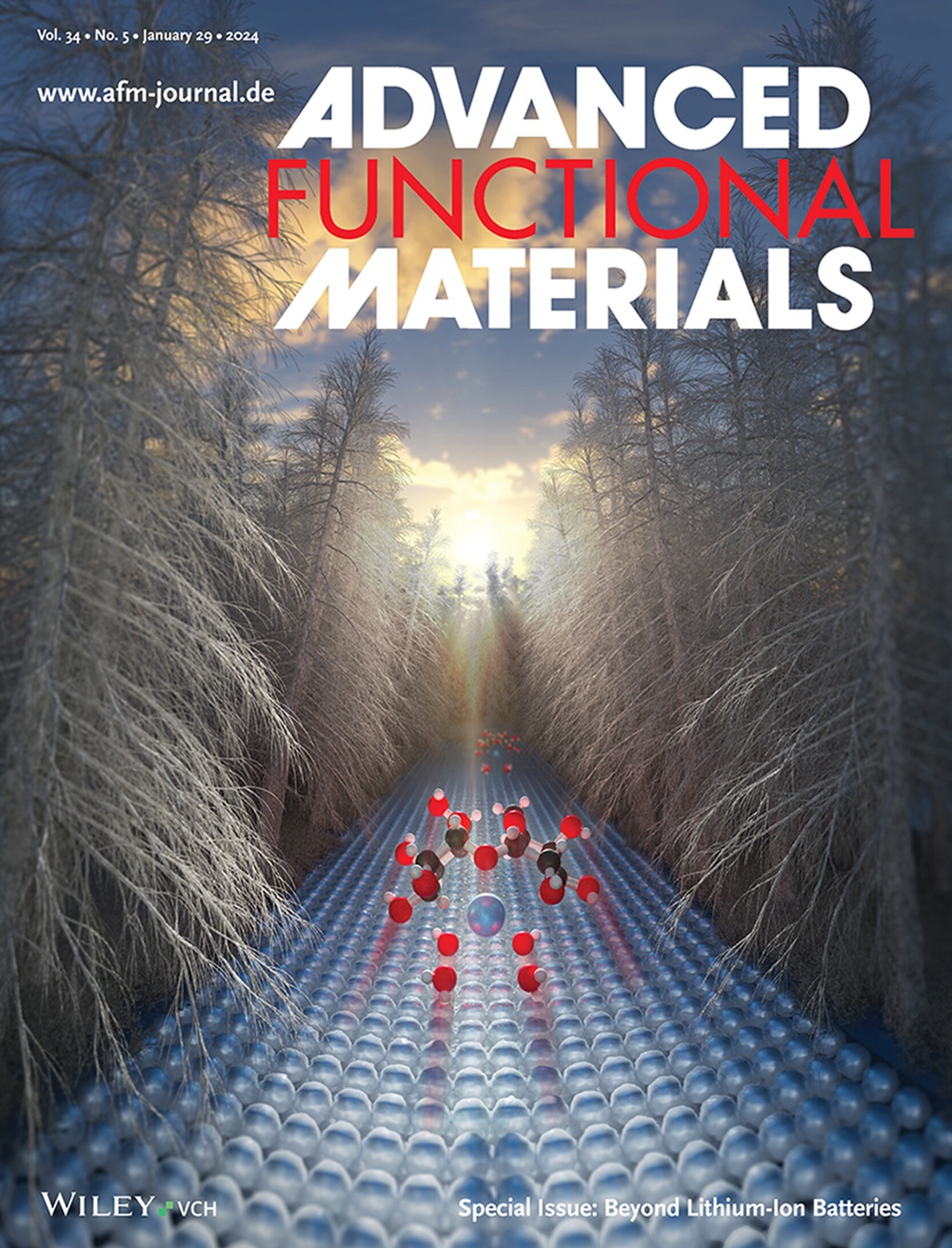Giant Bulk Photovoltaic Power Generation in 2D AgBiP2Se6 Crystals
IF 18.5
1区 材料科学
Q1 CHEMISTRY, MULTIDISCIPLINARY
引用次数: 0
Abstract
With the theoretical high power conversion efficiency (PCE) exceeding the thermodynamic Schockley–Queisser (S–Q) limit, the bulk photovoltaic (BPV) effect, which is manifested in acentric crystals across the entire visual spectrum, holds great potential for next‐generation light‐harvesting devices. Here the abnormally giant second harmonic generation (SHG) activity and BPV response in 2D AgBiP二维 AgBiP2Se6 晶体中的巨量光伏发电
由于理论上的高功率转换效率(PCE)超过了热力学 Schockley-Queisser (S-Q) 极限,体光效应(BPV)在整个视觉光谱范围内都体现在偏心晶体中,因此在下一代光收集器件中具有巨大潜力。本文展示了具有破碎反转对称性的二维 AgBiP2Se6 晶体中异常巨大的二次谐波发生(SHG)活性和 BPV 响应,这种响应可随着厚度的缩减而显著增强。基于夹有石墨烯电极的垂直器件,Eg 为 1.49 eV 的二维 AgBiP2Se6 晶体的宽带光吸收可在整个可见光谱范围内实现巨大的 BPV 响应,并且在 532 nm 光照条件下,高效利用太阳能可产生大短路电流(≈330 mA cm-2)、高 PCE(≈0.13%)和 EQE(≈12.5%)。此外,得益于面内电场驱动的局部离子再分布,BPV 光生成电流有效地提高了 3 倍,产生了 0.18% 的超高 PCE,在已报道的二维同心晶体中属于较高水平。这项研究将 AgBiP2Se6 重新引入二维同心晶体家族,为开发光收集应用的 BPV 器件奠定了基础。
本文章由计算机程序翻译,如有差异,请以英文原文为准。
求助全文
约1分钟内获得全文
求助全文
来源期刊

Advanced Functional Materials
工程技术-材料科学:综合
CiteScore
29.50
自引率
4.20%
发文量
2086
审稿时长
2.1 months
期刊介绍:
Firmly established as a top-tier materials science journal, Advanced Functional Materials reports breakthrough research in all aspects of materials science, including nanotechnology, chemistry, physics, and biology every week.
Advanced Functional Materials is known for its rapid and fair peer review, quality content, and high impact, making it the first choice of the international materials science community.
 求助内容:
求助内容: 应助结果提醒方式:
应助结果提醒方式:


